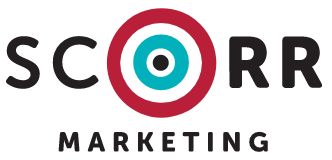News
SCORR Marketing Advice: Message is What Matters

Traditional Media? Social Media? “New” Media? The Message is What Matters
By Cinda Orr
During my career, the advertising industry has gone through a monumental paradigm shift. When I was growing up, there were basically three television networks, at least one daily newspaper in every city, relatively few consumer magazines, and billboards lining virtually every highway.
Cable television splintered what was once a monolithic audience, magazines sprang up for every possible consumer interest, and people started losing the habit of reading a daily newspaper. Lady Bird Johnson’s highway beautification program brought down the billboards even as it cleaned up the litter along America’s highways.
Then, along came computers, cell phones, the internet, email, iPhones, TiVo, YouTube, Facebook and Twitter, and the techniques of marketing a message to a discrete audience changed forever.
Or did they?
Traditional media – properly used – can still be highly effective communications channels. For example, consider how receiving an email marketing message compares with receiving a package in the real mail. The challenge in both cases is to get the recipient to open the mail and get the message, but the promise of opening the email is — at best — that you’ll be momentarily entertained by some music or animation. The promise of opening the physical package, on the other hand, is that you get something physical. You know it’s not going to be a bar of gold, but not knowing what’s inside is usually all the motivation the recipient needs to tear open a dimensional package.
Once he or she does, they have something with your name on it that they can hold in their hand, interact with, and possibly even feel mildly indebted to you for. Which message do you think is more likely to be remembered?
Real mail has another advantage over email, in that it’s much easier to acquire a targeted list, vetted for accuracy, so the chances of the right people receiving your message go up enormously.
I don’t mean to imply that “new” media can’t be effective – it’s been proven repeatedly that it can. The point is that a marketing program of today has essentially the same objectives as one of 50 or even 100 years ago, namely, to repeatedly expose the same prospect to a consistent and persuasive message. Our job is to figure out the best way to do that for each individual client, and we’ve learned it sometimes means a Facebook page, email blasts and regular “tweets”, and other times it means a tradeshow booth, magazine ads and direct mail.
Advertising is a lot more complicated in the digital age, but people haven’t changed. If you can get their attention and demonstrate how your product or service can make their life better, you’ll get just the reaction you need.